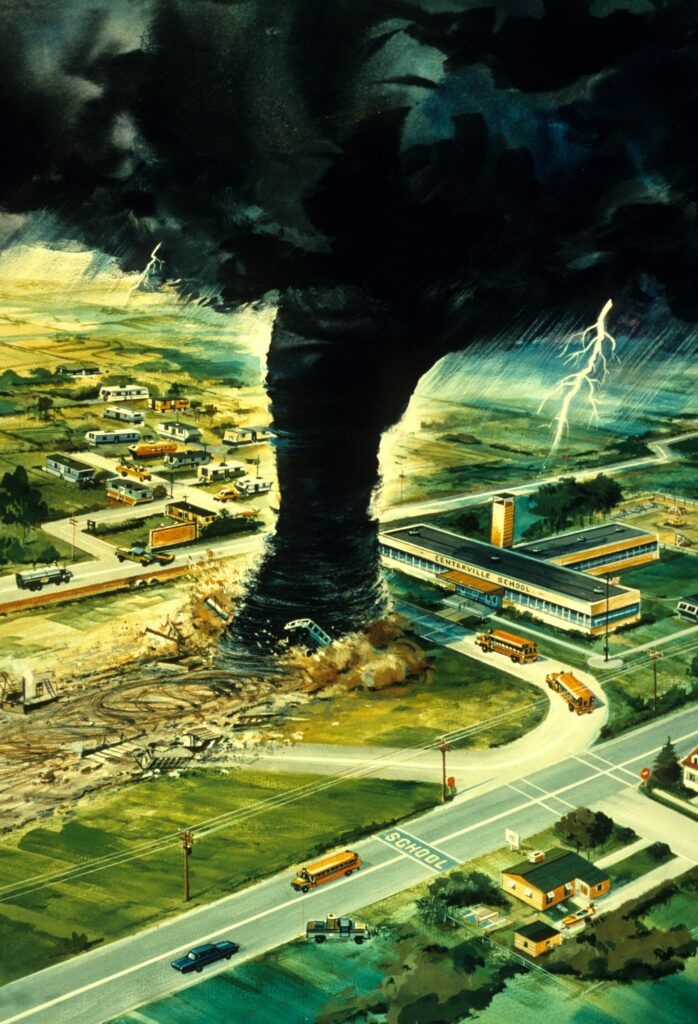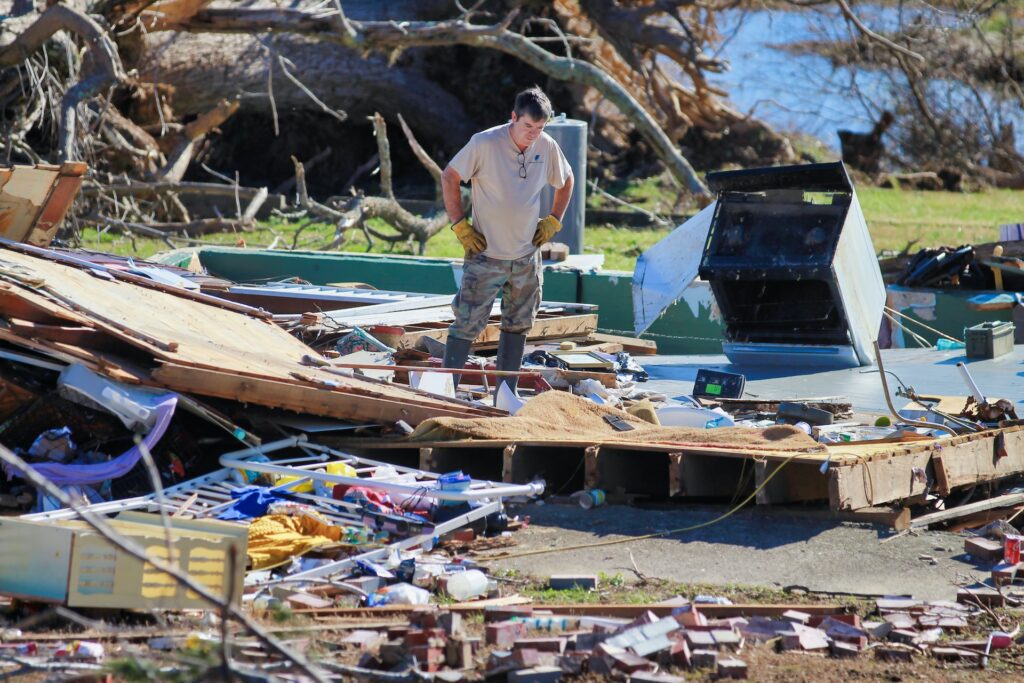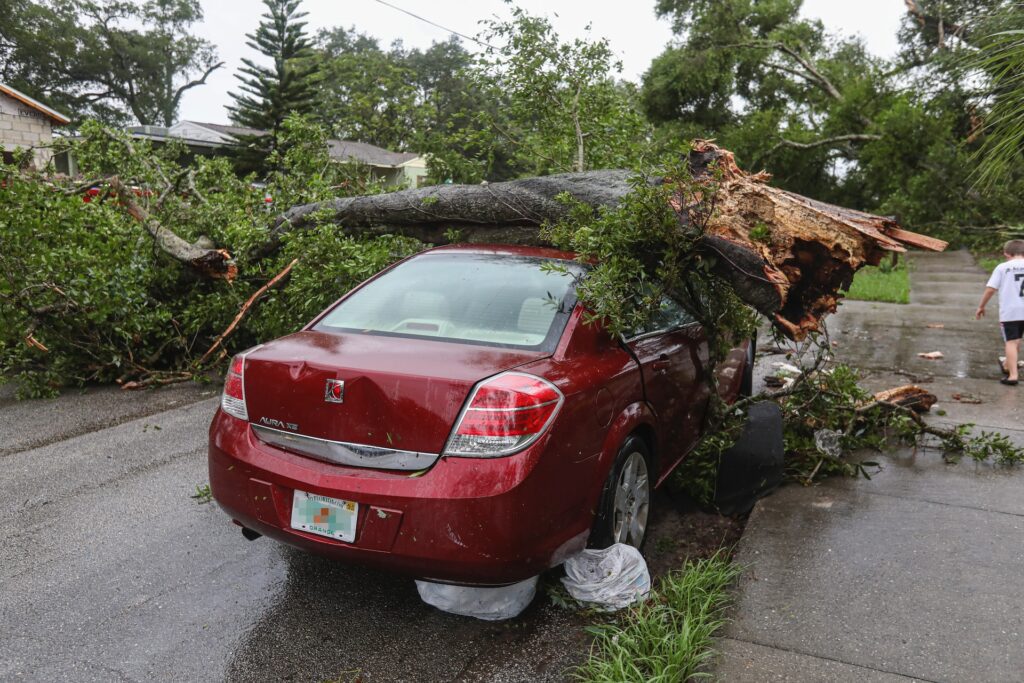Tornadoes : Mother Nature’s Temper Tantrums: An Exploration of Tornadoes 2024


Introduction
Tornadoes are violently rotating columns of air that extend from thunderstorms down to the ground. They are capable of massive destruction due to their strong winds that can exceed 200 miles per hour. Understanding how tornadoes form, the different types, the largest on record, and the extensive damage they can inflict provides critical insight into these deadly forces of nature.
How Do Tornadoes Form?
Tornadoes form from supercell thunderstorms when updrafts of warm air and downdrafts of cool air occur in the right conditions. When rising warm air begins to rotate and meets descending cooler air, the rotating winds can be tilted vertically to form a tornado.


Specific weather conditions are required for supercells and tornadoes: instability in the atmosphere, high humidity, warm surface air and cooler air aloft. When these ingredients come together, the stage is set for tornadogenesis. Tornado Alley in the central United States sees frequent tornado activity due to geography and weather patterns ideal for spawning supercells.
Tornado season in the US peaks in the spring and early summer as warm, moisture-laden Gulf air interacts with cool northern air masses. But tornadoes can happen any time of the year if conditions are right.
Tornado Types
There are multiple classifications of tornadoes according to the damage caused:
EF0 – Weak tornadoes with winds of 65-85 mph capable of minor damage like broken tree branches, damaged chimneys, shallow-rooted trees toppled.
EF1 – Moderate tornadoes with 86-110 mph winds can peel surface roofs, push over mobile homes, snap weak trees.
EF2 – Strong tornadoes packing 111-135 mph winds which can severely damage roofs, tear off porches, destroy mobile homes, uproot large trees.
EF3 – Severe tornadoes with 136-165 mph winds which can demolish well-constructed homes, throw vehicles, uproot large trees, generate light object missiles.
EF4 – Devastating tornadoes with 166-200 mph winds which can raze homes, toss heavy cars, take bark off trees, cause major infrastructure damage.
EF5 – Catastrophic tornadoes over 200 mph which cause incredible destruction of infrastructure and vegetation, can deform large skyscrapers.
In addition to the Enhanced Fujita scale ratings based on damage, tornadoes can be further classified based on their shape and structure:
– Wedge Tornadoes: Widest at ground level, tapering up. Most intense storms.
– Rope Tornadoes: Relatively narrow throughout entire funnel. Less severe.
– Stovepipe Tornadoes: Smaller, cylindrical structure without much debris visible spinning inside.
– Conical Tornadoes: Large, symmetrical funnel shaped. Cause extensive damage.
– Elephant Trunk Tornadoes: Longer, dangling appendage extends below central funnel cloud.
– Multi-Vortex Tornadoes: Two or more small, intense subvortices revolve around a common center.
– Rain-Wrapped Tornadoes: Condensation funnel obscured by heavy rain. Hard to spot, vulnerable to being hit.
– Landspout Tornadoes: Weak tornadoes not associated with supercell storm, similar to a dust devil.
– Gustnadoes: Short-lived, weak circulation without linked thunderstorm or funnel cloud.
– Fire Whirls: Spinning vortex made of fire influenced by wind, not linked to thunderstorms.
Deadliest Tornadoes
Some of the worst tornado disasters in history in terms of lives lost:
– The Tri-State Tornado of March 18, 1925 – The deadliest tornado in US history swept across the Midwest for 3.5 hours spanning 352 miles, with winds estimated up to 300 mph. It killed 695 people.
– The Daulatpur–Saturia Tornado of April 26, 1989 – The deadliest tornado recorded worldwide in Bangladesh killed an estimated 1,300 people and injured 12,000.


– The Natchez Tornado of May 7, 1840 – This massive tornado caused 317 deaths along a path extending from Louisiana to Mississippi. Many slaves living in vulnerable housing were killed.
– The Jasper County, Missouri Tornado of May 22, 1957 – A large tornado traveling at 45 mph affected rural Missouri towns and killed 111 people.
– The Flint Tornado of June 8, 1953 – One of the deadliest Michigan tornadoes on record touched down during the Flint-Beecher tornado outbreak killing 116 people.
– The 2016 Yancheng Tornadoes – Two F4 tornadoes in China on June 23, 2016 caused widespread destruction, with 99 people killed and 846 injured.
– The Tupelo Tornado of April 5, 1936 – An F5 tornado devastated Tupelo, Mississippi killing 216 people and injuring over 700 in the fourth deadliest US tornado.
– The Woodward Tornado of April 9, 1947 – This long-track tornado struck multiple Oklahoma towns including Woodward where 107 died and almost 1,000 were injured.
– The Lorain Tornado of June 28, 1924 – This destructive tornado affected Ohio towns like Lorain, Sandusky and Cleveland, killing 85 people.
– The Manikganj, Bangladesh Tornado of April 26, 1989 – On the same day as the deadly Daulatpur tornado, this separate tornado killed about 80 people in the Manikganj District of Bangladesh.
Most Powerful Tornadoes
Some of the most intense tornadoes ever measured include:
– The 1999 Bridge Creek–Moore Tornado – This F5 tornado had estimated winds of 301 mph, the highest wind speed ever recorded worldwide.
– The 2013 El Reno Tornado – Winds reached 295 mph in this 2.6 mile wide tornado, the widest ever recorded.
– The 1974 Super Outbreak – 148 confirmed tornadoes over 2 days including massive F5s like the Xenia, Ohio tornado deemed among the most violent ever.
– The 2011 Joplin Tornado – An EF5 with winds over 200 mph, it caused catastrophic damage and 160 deaths in Joplin, Missouri.
– The Jarrell Tornado of May 27, 1997 – Texas F5 half a mile wide with wind speeds around 260 mph erased the town of Jarrell.
– The 1979 Red Rock Tornado – Considered one of the longest single tornadoes at 73 miles over 3.5 hours in length. Had F4/F5 winds.
– The 2004 Hallam Tornado – At a width of 2.5 miles wide, this F4 Nebraska tornado ranks among the widest ever recorded.


– The 2007 Elie, Manitoba Tornado – One of Canada’s highest-rated tornadoes struck Elie, Manitoba as an F5 with 205 mph winds.
– The 2013 Moore Tornado – Followed a similar track to the deadly 1999 Bridge Creek tornado. Was 1.3 miles wide with 210 mph winds.
– The 2018 Cairo, Nebraska Tornado – At times 2.4 miles wide, this EF4 tornado lasted nearly 35 minutes on the ground, considered an endurance record.
Costliest Tornadoes
Some of the most financially devastating tornadoes based on property and infrastructure damage include:
– The 2011 Joplin Tornado – Caused $2.8 billion in damage, ranking it the costliest single tornado to date.
– The Tuscaloosa Tornado of April 27, 2011 – Struck Tuscaloosa and Birmingham, Alabama causing $2.45 billion in direct losses.
– The Moore Tornadoes of 1999 and 2013 – Each caused around $2 billion damage to Moore, Oklahoma area.
– The 1965 Palm Sunday Outbreak – An estimated $1.5 billion in damage in today’s dollars occurred across the Midwest from 47 tornadoes over two days.
– The 1955 Great Plains Outbreak Tornadoes – Resulted in over $1 billion damage across Kansas, Missouri, Illinois, and Iowa.
– The Waco Tornado of May 11, 1953 – The deadliest Texas tornado caused severe damage in the Waco area totaling $300 million today.
– The Woodward Tornado of 1947 – Caused what would now amount to over $450 million in damage across Oklahoma.
– The Omaha Easter Sunday Tornado of 1913 – The most intense tornado is Nebraska’s history devastated Omaha with $1 billion + damage by today’s standards.
– The Super Outbreak of 1974 – 148 tornadoes over 13 US states caused an estimated $900 million in damage at the time.
– The Dixie Alley Tornadoes of April 25–28, 2011 – Over 100 tornadoes in the Southeast caused around $900 million damage.
Tornado Impacts
– Hundreds of deaths and thousands of injuries. Flying debris is extremely dangerous.
– Complete destruction of homes, buildings, infrastructure. Foundations swept away.
– Trees uprooted, debarked, defoliated by extreme winds. Hardwood tree trunks snapped.
– Livestock and other animals killed by flying debris or collapsing structures.
– Power lines, utility poles downed cutting electricity, phone service. Economic losses.
– Heavy vehicles like trains, planes, trucks overturned by severe winds.
– People trapped under collapsed buildings requiring rescue teams.
– Blocked roads, bridges from debris slowing emergency response.
– Fires ignited from gas leaks, damaged electrical systems.
– Airborne dust particles causing abrasions and breathing issues.
– Psychological trauma, PTSD for tornado survivors.
Conclusion
Tornadoes represent some of the most violent storms on Earth, capable of tremendous destruction and loss of life when they interact with human-built environments. But with proper preparedness, advancements in meteorology and early warning systems, and quick emergency response, the toll of these fierce swirling winds can be mitigated. Tornadoes serve as a reminder of humanity’s vulnerability to nature’s raw fury and unpredictability. Their mysteries and untapped power continue to both fascinate and terrify.





